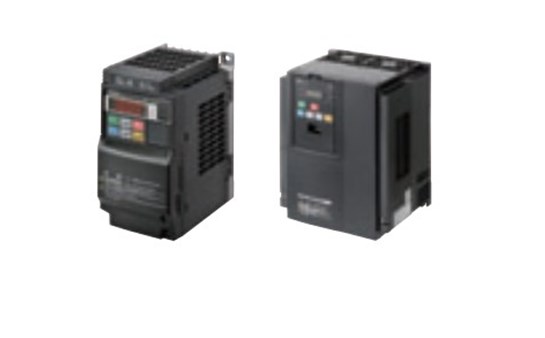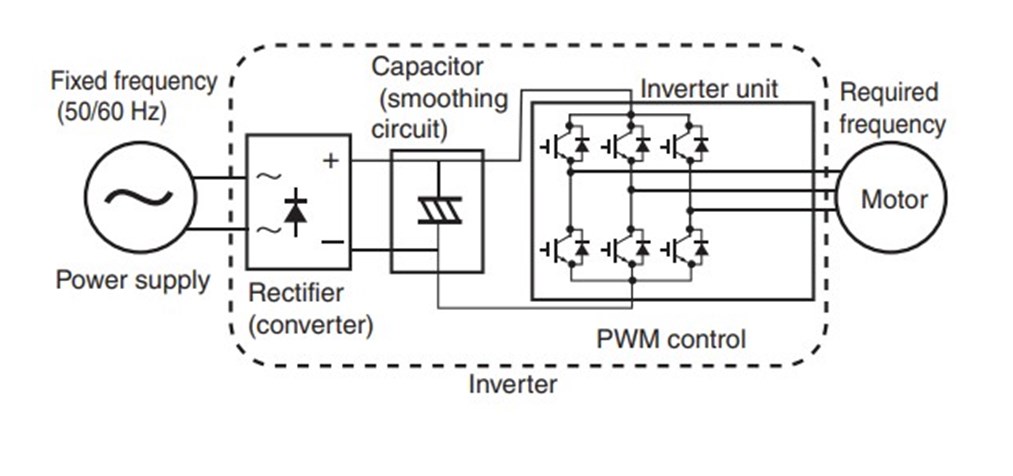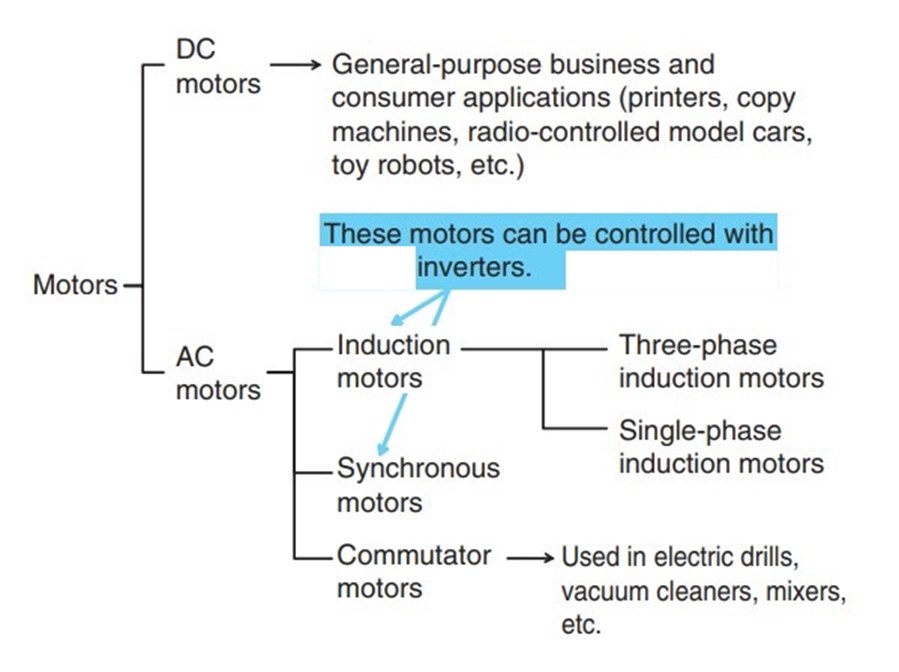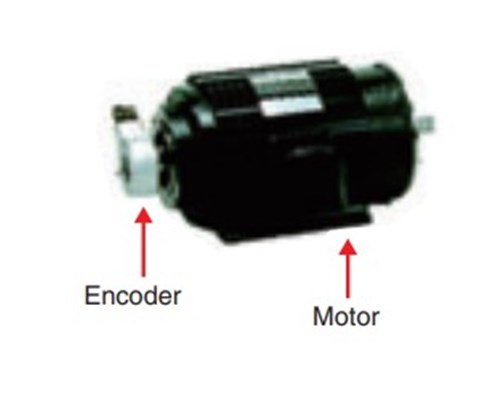INVERTER - SPEED REGULATORS
An inverter controls the frequency of power supplied to an AC motor to control the rotational speed of the motor.
Without an inverter, the AC motor would run at full speed as soon as you turned on the power supply. You would not be able to control the speed, making applications for the motor limited. Using an inverter to regulate the speed and acceleration of an AC motor increases the motor's range of applications compared to a constant speed motor. The speed of an engine is normally measured as the number of revolutions per minute (rpm). The rate of acceleration is given as the change in velocity over a certain period of time.

Features
Adjust and change AC frequency and voltage freely
An inverter uses this function to freely control the speed and torque of a motor.

This type of control, in which the frequency and voltage are freely adjustable, is called pulse width modulation, or PWM. The inverter first converts AC power to DC power and again creates AC power from the converted DC power using PWM control. The inverter outputs a pulsed voltage and the pulses are smoothed by the motor coil so that a sine wave current flows into the motor to control motor speed and torque.

The voltage output from the inverter is in pulse form.
The pulses are smoothed by the motor coil and a sine wave current flows. As a result, the output from a general-purpose inverter cannot be used for equipment other than motors.
Main key functions Applicable engines
Inverters can control induction motors. Inverters can control synchronous motors.

As induction motors can be used to achieve simple speed control at relatively low cost, they are used in many applications. They can only be used by connecting an AC power supply, so installation is extremely easy. Generally, a cooling fan is attached to the rear to help dissipate the heat generated by the engine.
Torque Boost (Torque Compensation)
In low frequency ranges, the voltage drop has a large impact, reducing motor torque. To compensate for this, adjustments are made to produce high voltage at the required frequency. This function is called torque boost or torque compensation. Two torque boost options are available: Manual Torque Adjustment and Automatic Torque Adjustment.
Inverter overload detection
There are two types of overload with an inverter: inverter overload and motor overload. Overload detection is performed to protect both the inverter and the motor from burning.
Voltage surge detection and braking function
When a motor slows down, or when the load is reduced, the motor serves as a generator to supply power to the inverter. This phenomenon is known as regeneration. If the regenerative energy is too large to be stored in the inverter, it causes overvoltage. Regenerative treatment uses the braking circuits built into the inverter to convert the regenerated energy into heat through resistors, preventing overvoltage.
Control functions
V / f control
V / f control is a method of controlling a motor by supplying a specific current to the coil to output a specific torque. Therefore, voltage and frequency are in a proportional relationship. This is called V / f characteristics.
Control vector
The control carrier is used to correct the output waveform according to the voltage and current output from the inverter in an induction motor. Motor speed and output torque are calculated from the output voltage and current to control them. Although induction motors have unstable characteristics, the use of carrier control produces stable characteristics where the actual speed can follow a reference frequency. There are mainly the following two types of carrier control.
Carrier control without sensors
No sensor means no feedback from an encoder. Although there is no feedback signal from a sensor, the current and voltage output from the inverter to the motor are used to correct the output waveform. This allows for better speed control.
Controller with encoder feedback
Unlike carrier sensorless control, control is performed using feedback from an encoder. The encoder is also called a pulse generator, and this type of control is also called a PG control operator. With this method, the inverter monitors the output voltage, output current and encoder feedback from the motor. Encoder feedback is used to adjust the output waveform to perform precise speed control.
Recent posts Recent posts
Bottom my account
Popular Categories
© 2004-2024 Electronio. Κατασκεύη eShop CS-Cart Hellas
This site uses cookies to store information on your computer. See our cookie policy for further details on how to block cookies.
Analytical cookies for us to better craft the user experience based on your page view experiences.

